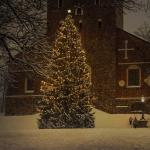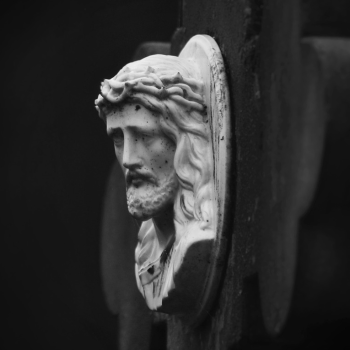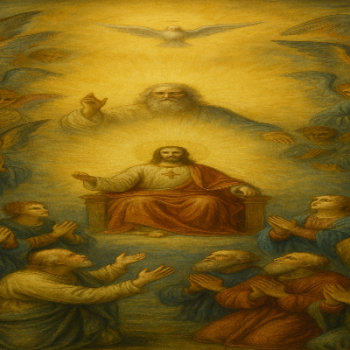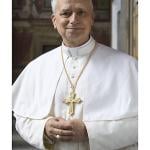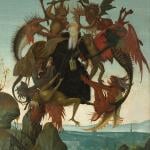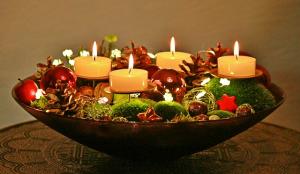
The time has come when Catholics celebrate the season of Advent. In general, Advent is defined as a period of prayer in preparation for Christmas, including four Sundays, the first nearest the feast of Saint Andrew, held on November 30th. Significantly, it is also considered the beginning of the Church’s liturgical year.
In this essay, I will provide a brief introduction to Advent and discuss the two most common symbols of Advent: candles and wreaths. I will conclude by suggesting that there exists a vital dichotomy at the heart of the Advent season.
Four Candles And A Wreath
Advent (a Latin word translated as arrival) is usually traced back to fourth-century France. At the time, the Church in France used the period before the Epiphany to prepare for baptism. It was called Saint Martin’s Lent, referring to the forty days beginning on November 11th, the feast of Saint Martin of Tours.
However, Advent, as we know it today, was developed in Rome. Near the end of the sixth century, Pope Gregory I composed many of the prayers, antiphons, and psalm responses we now associate with Advent. Many themes and ideas we now know can be traced to the Roman Advent Season.
The use of a wreath, however, is a relatively recent addition to the Advent tradition. It is also one of the most recognizable symbols of Advent.
Traditionally, the wreath is made of evergreen branches formed into a circle with the four candles held within. The wreath is itself symbolic. The color green is associated with growth, harmony, and fertility. It has also been considered symbolic of hope.
Additionally, the evergreen (as distinguished from a deciduous tree or plant) has historically been considered a symbol of rebirth and eternal life. As such, it was adopted by the early Christian faith as a sign of eternal life. (See Isaiah 55:13).
Candles have various symbolic meanings, but in Catholicism, they almost always represent Christ, who is the light of the world coming through the darkness. (See John 8:12).
Advent Candles are usually comprised of three purple candles with one rose or pink. Purple is used to represent penitence as well as anticipation or waiting.
Rose or Pink candles are used on the third Sunday of Advent to symbolize rejoicing.
Finally, Advent can be explained thematically. The first Sunday of Advent marks the beginning of the season and traditionally focuses on the theme of hope for a Savior (see Titus 2:13; John 3:16–17).
The Second Sunday focuses on faith and Mary and Joseph’s journey to the city where Jesus would be born (see Micah 5:2; Luke 2:1–7).
The Third Sunday is called Gaudete Sunday (Gaudete is a Latin word for rejoicing). As one would expect, the focus is on the joy brought by the birth of the Savior. (see Isaiah 9:1–3; Luke 2:8–12).
Lastly, the fourth and final Sunday of Advent emphasizes the peace that the Savior brings into the world (see Isaiah 9:6; John 14:27) and which the Angel’s Candle heralds (see Luke 2:13–14).
Having sought to provide a basic explanation of the Advent season, I turn to the two aspects or tensions inherent in Advent.
Two Aspects Of Advent
In a sense, Advent comprises two parts: preparation and celebration.
Preparation entails being ready for the coming of the Savior. In turn, the coming of the Savior can be understood physically and literally as in the Incarnation. It can also be understood spiritually and metaphorically when we speak of God coming into our hearts.
Regardless of under what auspices Advent is considered, we must consider the importance of repentance. Since Advent can be seen as leading into the joy of Christmas, it may seem incongruous to think of Advent as involving repentance. Muddling matters somewhat is the fact that Christmas is celebrating an event that occurred two thousand years ago.
If Advent is preparing the way for the birth of the Savior two thousand years ago, why speak of the need to repent in the present tense?
To understand why, it is necessary to place Advent in an eschatological framework. That is to say, it is necessary to see Advent as preparing and even celebrating the Second Coming of Christ.
Preparing for the Second Coming requires that we clear away the detritus of our sins, which is done through confession and penance.
If it is true that Advent is about preparation through repentance, is it not strange to also associate Advent with a celebration? It is, indeed, appropriate, however.
If Advent is a preparation for Christmas, and Christmas is intended to commemorate the birth of the Savior, then we can see Advent as a reason to rejoice as well as repent.
However, it was said above that Advent should also be understood eschatologically, that is, with an eye toward Christ’s Second Coming. The idea of Christ’s Second Coming, which precipitates the end of the world, may not seem to be a cause for celebration; nevertheless, if one sees his redemption as a celebratory occasion, then it is, indeed, a reason for joy.
This seems to be what is intended when Christ tells us, “But when these signs begin to happen [the tribulation], stand erect and raise your heads because your redemption is at hand.” (Luke 21:28).
Conclusion
The season of Advent provides a unique tension. On one hand, Advent necessitates the need for repentance. Yet, Advent is also a season of joy, for it is a time to prepare for the coming of our Savior.



